
Nepal is a heaven for travelers seeking Adventure trekking and our blog is your ultimate resource for planning and discussing trips in this enchanting country. From the bustling streets of Kathmandu to the serene trails of the Himalayas, Treks Himalaya ensures your journey is well organized and fulfilling. Nepal Travelers share their experiences, insights, and tips about visiting to Nepal. These blogs cater to diverse audiences, ranging from adventure seekers and cultural enthusiasts to luxury travelers and first-time visitors. Detailed accounts of popular treks like the Annapurna Base Camp, Annapurna Circuit, Manaslu Circuit, and Langtang valley, including itineraries, difficulty levels and preparation tips. Highlights of Kathmandu's UNESCO World Heritage sites, such as Swayambhunath (Monkey Temple), Pashupatinath Temple, Boudhanath Stupa, and Bhaktapur Durbar Square. Exploration of picturesque spots like Pokhara, Lumbini (birthplace of Lord Buddha), and Chitwan National Park. Guidance on obtaining visas, managing budgets, booking accommodations, and choosing local transportation options like buses, taxis, or domestic flights. Insights into the best times to visit for trekking, festivals, or wildlife exploration. Information on trekking permits like the TIMS card, ACAP (Annapurna Conservation Area Permit), and others. Exploration of Nepal's diverse ethnic groups, traditions, and festivals, such as Dashain, Tihar, and Holi. Coverage of local cuisines, including popular dishes like momo, dal bhat, and Newari specialties. Personal experiences with activities like paragliding in Pokhara, rafting on Nepal's rivers, bungee jumping, zip-lining, and jungle safaris. Narratives of memorable encounters with locals, unique experiences during treks, or challenges faced while exploring remote areas. Stunning photographs of Nepal's landscapes, cultural events, and wildlife to inspire readers. Videos showcasing treks, festivals, or daily life in Nepal.
Sustainable and Responsible Travel
Tips on respecting local cultures, supporting eco-friendly practices, and contributing to local economies.
Why Are Nepal Travel Blogs Valuable?
Inspiration:- They motivate travelers to visit Nepal by showcasing its beauty and diversity.
Planning Resources:- Blogs provide practical tips and real-life insights that help travelers plan their trips effectively.
Cultural Connection:- They deepen readers' understanding of Nepal's rich cultural heritage and traditions.
Whether written by solo travelers, trekking enthusiasts, or cultural explorers, Nepal travel blogs are a treasure trove of information and inspiration for anyone looking to explore the Land of the Himalayas.
Why Trek in Nepal?
Nepal offers a diverse range of trekking options suitable for people of all ages and fitness levels. Whether you're an experienced trekker aiming for remote, challenging trails or a beginner looking for a leisurely hike, Nepal has something for everyone.
When to Trek?
The best seasons for trekking are during the dry and warm months of March to May and September to November.
The ideal trekking seasons in Nepal are:-
Spring (March to May):- Warm temperatures and blooming rhododendrons.
Autumn (September to November):- Clear skies and breathtaking mountain vistas.
While trekking during the monsoon (June to August) or winter (December to February) is possible, expect challenges like rain, leeches, and snow-blocked passes during these off-seasons.
What to Expect While Trekking
Nepal's well-marked trekking trails are far from uncharted wilderness. These paths connect quaint villages and are bustling with locals transporting goods and fellow trekkers soaking in the stunning landscapes. Along the way, teahouses provide rest stops and accommodation, offering trekkers a chance to recharge and immerse themselves in the warm hospitality of the Nepalese people.
Monsoon and Winter Trekking
Monsoon (June–August):- While trails are less crowded, landslides and rain can disrupt treks. However, most rain occurs at night, leaving cloudy but manageable days for hiking.
Winter (December–February):- Trails are quieter, but extreme cold and snow can close high passes.
Mornings often offer clearer skies for spectacular views, even in these off-peak seasons.
Unique Monsoon Trekking Experiences
Empty Trails:- Unlike the bustling trekking seasons (spring and autumn), monsoon trails are quieter, offering a more serene and personal connection to nature.
Lush Landscapes:- The rains transform the hills into vibrant greens, making the scenery exceptionally lush and alive.
Cultural Encounters: With fewer trekkers, you'll have more meaningful interactions with locals and a deeper appreciation of their daily lives and traditions.
Popular Monsoon Treks
Annapurna Base Camp Trek (ABC) (4130m.) (Annapurna Sanctuary Trek):-
Renowned for its panoramic 360 degree views of towering peaks, including Annapurna South, Hiunchuli, and Machhapuchhre (Fishtail).
Tea Houses along the route offer rest, recovery, and local hospitality.
Sunrises and sunsets here are magical, with mornings often clearer for better views.
Challenges include potential landslides and cloud-covered peaks, but the cultural richness and tranquility make it worthwhile.
Langtang Gosainkunda Helambu Trek:-
Close to Kathmandu, offering sacred lakes, stunning landscapes, and Tibetan-influenced culture.
The trails are less crowded, making it ideal for a peaceful trekking experience.
Wildlife, lush valleys, and spiritual landmarks enhance the journey.
Manaslu Trekking:-
Known for its remoteness and pristine beauty, Manaslu offers an adventurous escape. The Larkya La Pass (5106m.) is a highlight, with views of dramatic Himalayan peaks. The trails are challenging, and landslides are a possibility during monsoons, but the trek is rewarding for those seeking solitude and adventure.
Annapurna Panorama Trekking:- Annapurna Panorama Trekking, also known as the Annapurna Panorama View Trekking is a short yet immensely rewarding adventure in Nepal's Annapurna trekking region including view from Poon Hill (3210m.) in 180 degree angle. This classic trek is perfect for those seeking breathtaking mountain landscapes within a limited timeframe. It offers spectacular views of the Annapurna range, including the iconic Mt. Machhapuchhre (Fishtail).
Things to Consider During Monsoon Treks
Trail Conditions:- Landslides can occur, so staying updated on trail safety is essential.
Gear Preparation:- Waterproof clothing, sturdy footwear, and quick-dry layers are a must.
Tea House Availability:- Despite fewer trekkers, teahouses remain operational, providing warm meals and comfortable shelters.
Flexible Travel Plans
Your Trekking Companion
Treks Himalaya specializes in organizing excursions tailored to your preferences, ensuring satisfaction and safety. With our expertise, you can explore Nepal’s breathtaking landscapes, immerse yourself in local cultures, and create unforgettable memories. Start planning your trekking adventure today and experience the magic of Nepal’s majestic Himalayas.
Timing:- Start your days early to take advantage of clearer morning skies before afternoon rains.
The Warmth of Nepalese Hospitality
Regardless of the season, the Nepalese people welcome trekkers with warmth and genuine friendliness. Their vibrant culture and unwavering resilience shine through, making every trek memorable. Monsoon trekking in Nepal might require a bit more preparation and flexibility, but it offers an unparalleled blend of solitude, lush beauty and cultural immersion. If you're adventurous and open to unique challenges, this could be the perfect time to explore the Himalayas.
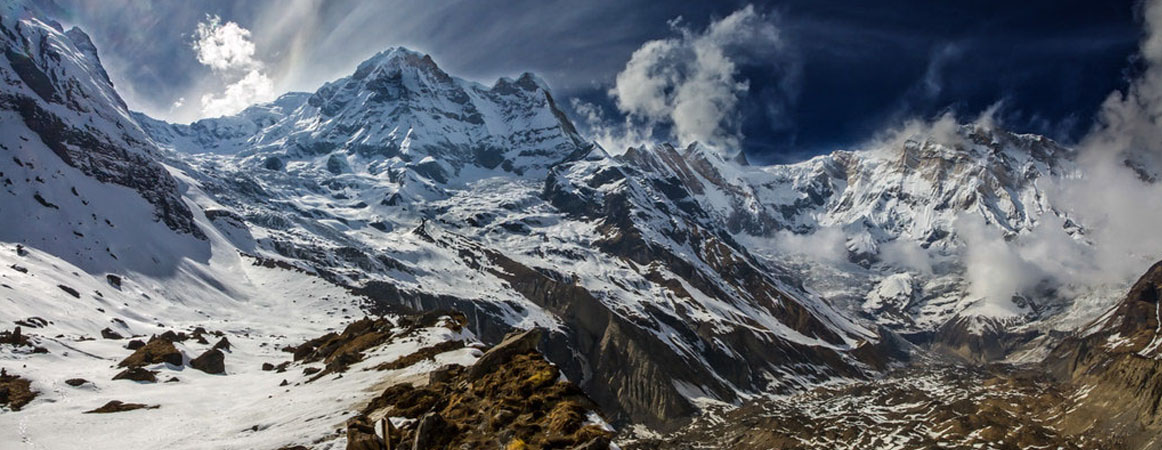
Annapurna Base Camp Trekking (ABC) (4130m.) also famously known as the Annapurna Sanctuary Trekking truly stands out as a remarkable journey through Nepal's breathtaking landscapes where you can see view in 360 degree angle with sunrise and sunset. This trek combines awe-inspiring mountain vistas, lush terraced fields, traditional Gurung villages, and diverse ecosystems, offering a balanced blend of natural beauty and cultural immersion. Organized by reliable trekking groups like Treks Himalaya, the ABC trek ensures a seamless experience with well-structured itineraries, professional guides, and warm hospitality. The trek takes you into the heart of the Annapurna trekking region, where you'll be surrounded by towering peaks like Annapurna I, Annapurna South, Hiunchuli, and the iconic Machhapuchhre (Fishtail). Witness the grandeur of the Annapurna range, particularly during sunrise and sunset. Explore the vibrant Gurung culture, interact with locals, and enjoy traditional Nepali cuisine in teahouses. Traverse through terraced farmlands, rhododendron forests, bamboo groves, and alpine meadows. The Annapurna Conservation Area is rich in biodiversity, home to various bird species and mountain flora. Experience the natural amphitheater of towering Himalayan peaks at the base camp. The trek typically takes 7 to 14 days, depending on the chosen route and pace, and is ideal for both seasoned trekkers and first-timers. The best times to embark on this adventure are during spring (March-May) and autumn (September-November), offering clear skies and favorable weather. With careful planning, permits (ACAP and TIMS), and guidance, the Annapurna Base Camp Trek becomes more than just a physical journey it's a transformative experience that leaves a lasting impression of the majestic Himalayas and Nepal's vibrant culture.
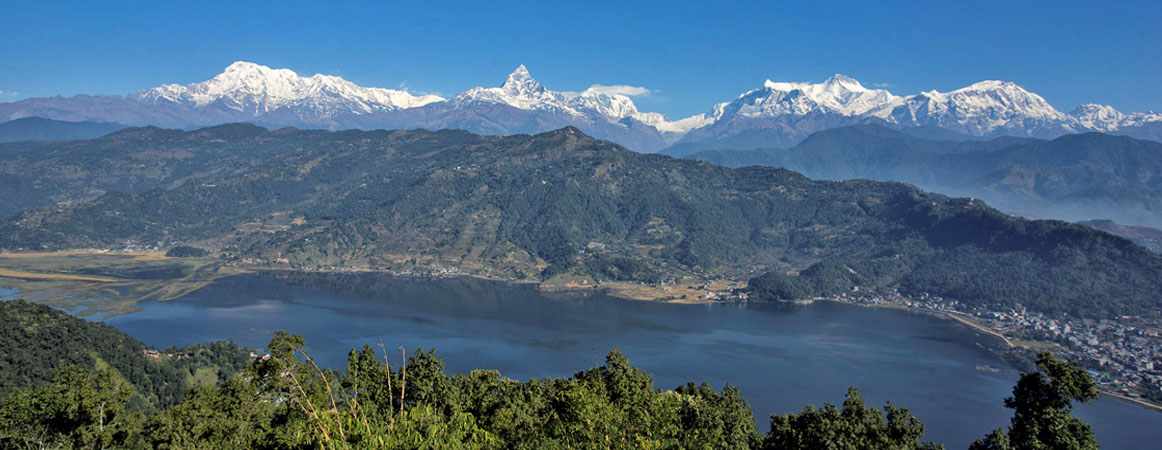
Annapurna Panorama Trekking also known as the Annapurna Panorama View Trekking is a popular short trek in Nepal’s Annapurna trekking region. It's an excellent choice for trekkers seeking a relatively easy yet rewarding adventure, with stunning mountain views and rich cultural experiences. The trek offers spectacular views of the Annapurna range, including Dhaulagiri (8,167m), Annapurna I (8,091m), Machhapuchhre (Fishtail), and Nilgiri, particularly from Poon Hill (3,210m), known for its breathtaking sunrise views. The trek allows trekkers to immerse themselves in the local Gurung and Magar cultures, with visits to traditional villages like Ghandruk and Landruk. These villages offer a chance to experience the hospitality and customs of the local communities, and their picturesque settings make for a truly authentic experience. The route passes through lush rhododendron forests, terraced fields, and charming mountain villages. The trek offers a great balance between nature and culture, with diverse flora and fauna adding to the scenic beauty. This trek is suitable for families, beginners, or those looking for a less physically demanding experience while still enjoying the Himalayan mountains. The trek's relatively low altitude makes it accessible for people of all fitness levels. Starting at Nayapul, the trek is easily accessible from Pokhara, and it doesn’t require advanced trekking skills. The trail weaves through forests, fields, and settlements, providing a perfect introduction to the region's diverse landscapes. The Annapurna Panorama View Trek is typically completed in around 10 days, making it ideal for trekkers with limited time but a desire for a rewarding Himalayan experience. With its combination of breathtaking views, cultural immersion, and scenic trekking trails, the Annapurna Panorama Trek offers a fantastic way to experience the Himalayas in a short amount of time.
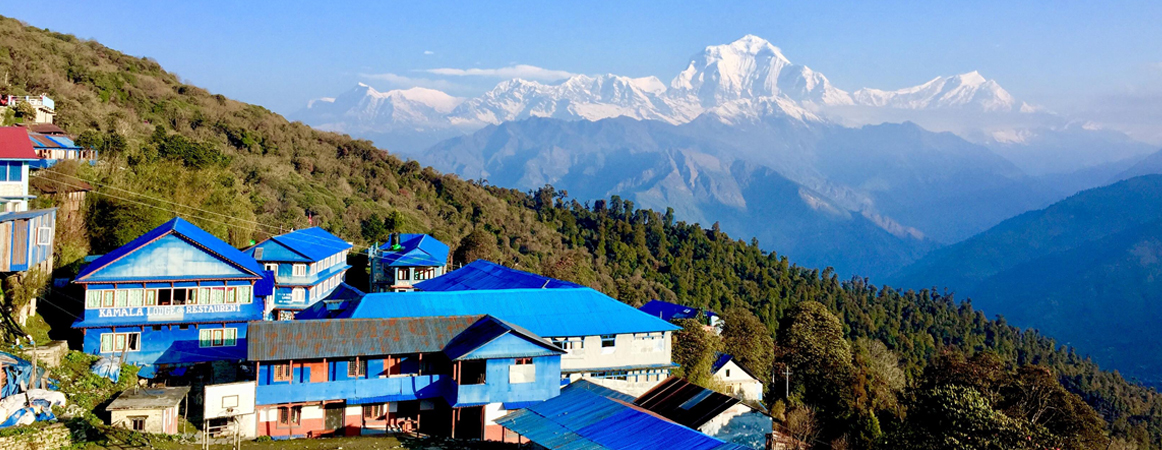
Ghorepani Trekking also call Ghorepani Poon Hill Trekking is one of the most popular trekking routes in the Annapurna trekking region, offering breathtaking views of some of the highest and most stunning mountains in the world, including Annapurna South, Machhapuchhre (Fishtail), and Himalchuli. It's renowned for its scenic beauty, cultural immersion, and ease of access, making it ideal for trekkers of all levels. The trek begins from Pokhara and follows a gradual ascent through picturesque villages like Ghorepani and Ghandruk, providing opportunities to experience local culture and traditional ethnic villages. Ghandruk, in particular, offers incredible views of Annapurna South and serves as an excellent spot for cultural exploration. One of the highlights of the trek is the Poon Hill Sunrise, where trekkers are treated to spectacular panoramic views of the Annapurna range at dawn. The trek also passes through lush forests, charming remote valleys, and offers various cultural and historical landmarks along the way. The Ghorepani Poon Hill Trek is available in different durations. The 7 day itinerary is perfect for those with limited time, while the 7-day version allows for a more leisurely experience, giving trekkers more time to explore and acclimatize. The trek is also considered a gateway to the Annapurna Base Camp Trek (ABC) (4130m.) (also known as the Annapurna Sanctuary Trek), one of the most iconic treks in Nepal. As a relatively short and accessible trek, the Ghorepani Poon Hill is perfect for both beginners and seasoned trekkers. It's a fantastic choice for families, first-time trekkers, and those looking to enjoy Nepal's natural beauty without a strenuous journey.
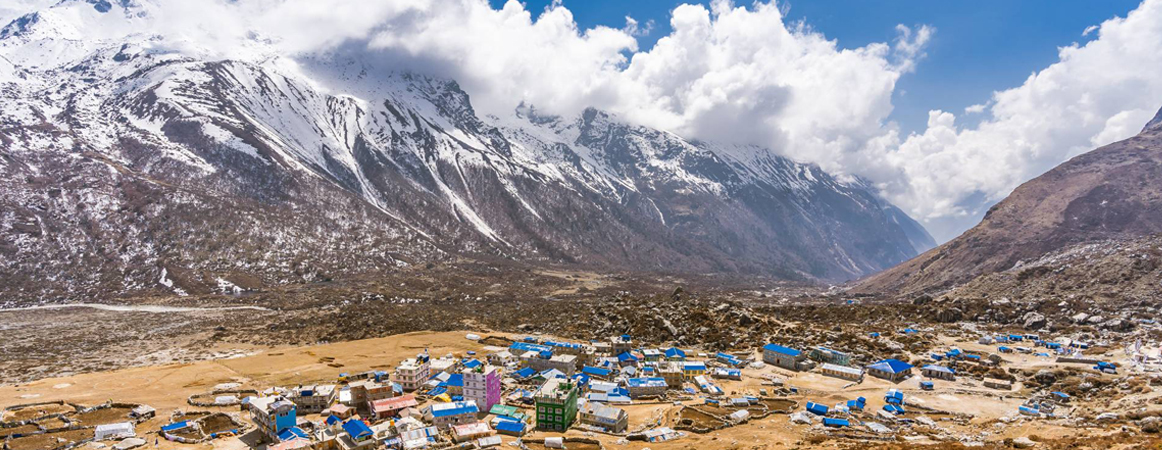
Langtang Gosainkunda Helambu Trekking is a unique and less crowded trekking destination in Nepal, located close to Kathmandu. It offers an incredible mix of natural beauty and cultural experiences, particularly from the Tamang ethnic group, who have a rich connection to Tibetan culture. The region's remote location is part of the Langtang National Park, which is home to diverse wildlife and a high concentration of stunning white Himalayan peaks. The trek begins in the village of Dunche, leading trekkers through fertile valleys and dense rhododendron forests. The landscape is marked by rushing rivers, lush jungles, and towering snow-capped mountains, providing excellent photo opportunities. The trek takes you to the sacred Gosainkunda Lake, which holds religious significance for both Hindus and Buddhists, further enhancing the trek's spiritual atmosphere. The trek area is just south of the Tibetan border, offering glimpses of Tibetan culture and pristine landscapes. As the trek progresses, you encounter remote villages with distinct Tibetan-style architecture and monasteries. The Langtang valley, while touching Tibet, is still far from the Tibetan Plateau, ensuring a more accessible experience compared to more distant treks in Nepal. The Langtang trekking region is an excellent option for trekking year-round, with the added advantage of being near Kathmandu. It offers a blend of high-altitude adventure, cultural immersion & natural beauty, making it a great choice for those looking to explore Nepal's mountainous terrain & rich cultural heritage during the Langtang Gosaikunda Helambu Trek.
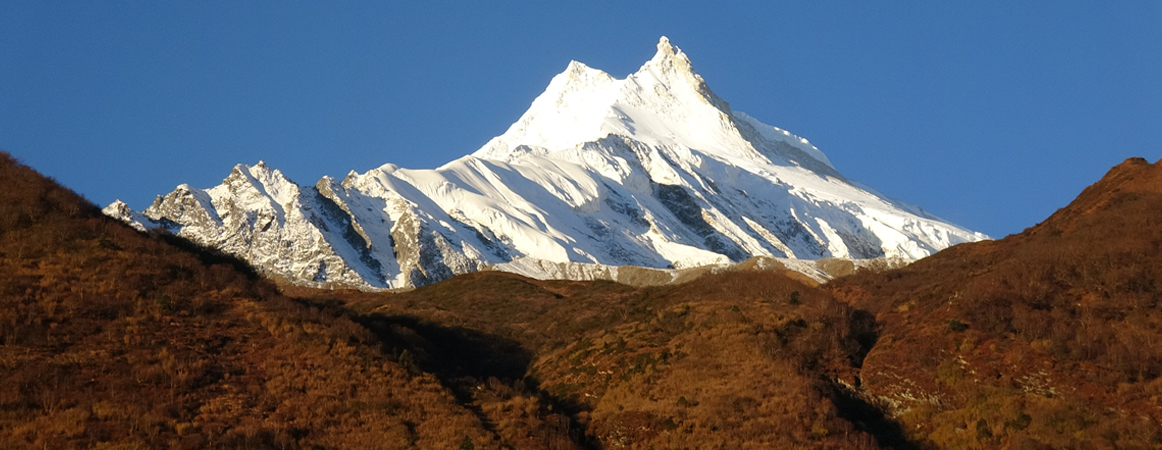
Manaslu Trekking also known as the Manaslu Base Camp Trekking is a thrilling and challenging trek located in the Gorkha district of Nepal. Situated in the mid-western part of the country, this trek circumnavigates the stunning Manaslu massif, which includes the world’s eighth highest peak, Mount Manaslu (8,163 meters). The trek offers trekkers an opportunity to explore both the natural beauty and the rich cultural diversity of the region, making it a unique and rewarding experience. The trek begins in Gorkha and follows the Budi Gandaki River, passing through forests, remote villages, and rugged terrain before ascending to the challenging Larkya La Pass (5,200 meters). This pass is a highlight of the trek, offering breathtaking views of snow-covered peaks that rise above 6,500 meters. The trek is strenuous, but the effort is rewarded with panoramic views of the Ganesh and Manaslu Himal ranges, as well as insights into the cultures of various ethnic groups such as the Gurung, Tibetan, and Tamang communities. One of the key features of the Manaslu Trek is its newly opened tea house route, which makes the trek more accessible while still preserving its remote and untouched charm. The trek not only offers stunning mountain vistas but also provides an opportunity to immerse in local traditions and customs that have been passed down through generations. The trek also passes through the Tsum Valley, a hidden gem known for its Tibetan influence, which adds a distinct cultural element to the journey. The Manaslu Treks was officially opened to trekkers in 1991, although mountaineering expeditions had been accessing the area for many years prior. The first exploration of the region was conducted by Tilman and his team in 1950. Since its opening, the trek has gained popularity among adventure enthusiasts seeking a combination of natural beauty, cultural immersion, and a physically demanding challenge. Overall, the trek offers an exciting, remote, and culturally rich trekking experience, with the chance to witness some of the most impressive Himalayan peaks and explore lesser-known areas of Nepal. Experienced trekkers who are ready for a strenuous journey surrounded by awe-inspiring mountain landscapes and diverse cultures. More blog information.
